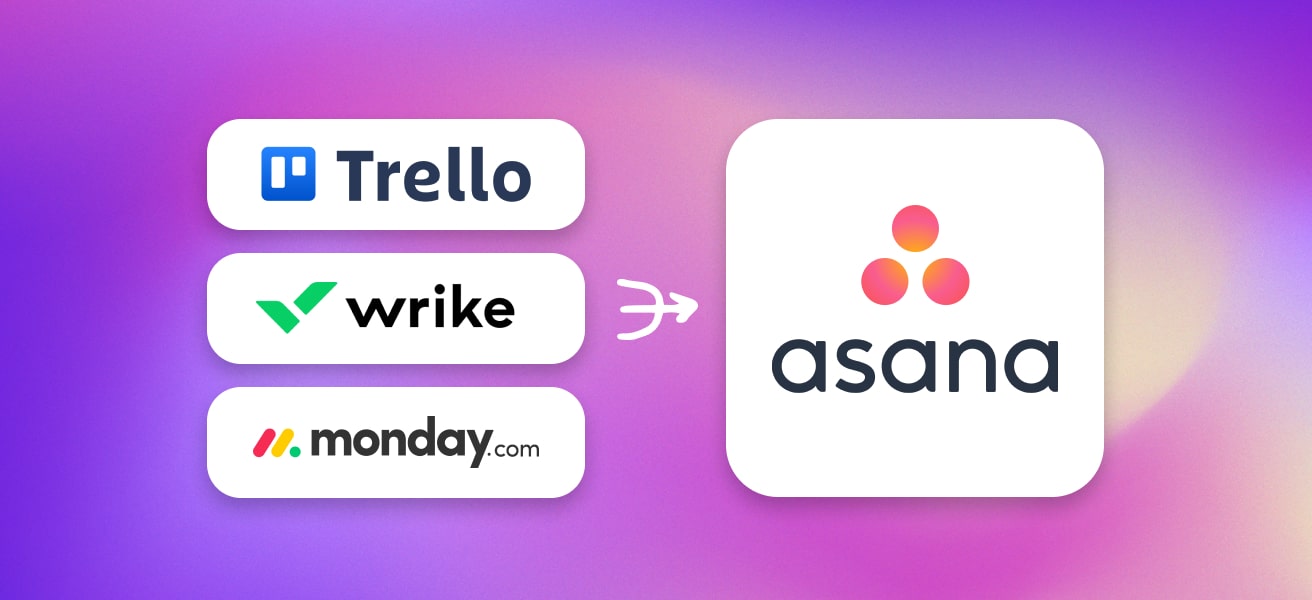Start small. Lock your target field taxonomy first, then do a 1:1 mapping with the workbook below. Run a 100-task dry run, validate dashboards and rules, and only then schedule the cutover. The workbook covers Trello, Wrike, and Monday mappings plus a CSV import template.
1) Pick a small, defensible pilot
Choose two workflows (e.g., Client Onboarding and Marketing Campaigns) and freeze changes on the legacy boards for just those scopes during the pilot. It reduces drift, sharpens training, and gets you to real dashboards faster.
2) Decide your Asana taxonomy first (don’t skip)
Adopt a shared set of fields across projects so portfolio reporting and automations work consistently:
- Status: Not Started / In Progress / Blocked / In Review / Done
- Priority: P1 / P2 / P3 / P4
- Department: Ops / Sales / Marketing / Finance / IT / HR
- Stage: Intake / Triage / Plan / Execute / Review / Close
- Risk: Low / Medium / High
- Approver (user): for gated steps
- SLA (days): for due-date rules
You’ll find these in the workbook’s Asana_Taxonomy sheet.
3) Field mapping quick reference
Below are highlights; full details live in the workbook.
Trello → Asana
- Card Name → Task Name (copy)
- Description → Notes (copy; strip markdown if needed)
- Members → Assignee (choose one; others as Followers or Tags)
- Labels → Tags (or convert important labels to custom fields like Priority/Department)
- Due/Start dates → Due/Start Date (YYYY-MM-DD)
- List → Section (rename to target sections)
- Checklist Items → Subtasks (flatten with Parent Task column)
- Attachments/Comments → Notes transcript (optional)
Wrike → Asana
- Title/Description/Assignees → Task/Notes/Assignee
- Status → Status (map custom states to standard Status)
- Custom Fields → Custom Fields (create matching ones first)
- Folder/Project/Subtasks → Project/Section/Parent Task
- Attachments/Comments → Notes transcript (optional)
Monday → Asana
- Item Name/Long Text → Task/Notes
- People → Assignee (select one owner)
- Date/Timeline → Due/Start Date
- Status/Priority → Status/Priority (map values to standards)
- Dropdown/Tags → Tags (or convert to fields)
- Board/Group/Subitems → Project/Section/Parent Task
- Files/Updates → Notes transcript (optional)
Each tool has a full sheet in the workbook with Transform / Mapping Notes, Required?, and Keep/Drop guidance.
4) Transform rules & common pitfalls
Dates: Convert to YYYY-MM-DD. If the source has time, either drop it or append to Notes.
Labels/Statuses: Use a lookup table to map into Priority and Status. Don’t leave “Doing / QA / Done” unstandardized.
Subtasks/Checklists: Flatten checklist items into rows and add a Parent Task column so Asana nests them correctly.
Multiple assignees: Asana works best with one owner. Convert additional people to Followers or Tags, or note them in Notes.
Attachments: Move critical documents to your approved storage; keep links in Notes.
Sensitive data: Avoid migrating regulated data blindly—scrub Notes/attachments per policy.
The workbook’s Transform_Examples sheet includes formulas/snippets (e.g., label → priority rules).
5) Dry run → validate → cutover
- Dry run (100 tasks): Import into a sandbox project using the Asana_Import_Template.csv.
- Validate dashboards: Confirm Status, Priority, Stage, Department widgets roll up correctly.
- Test rules: SLA/priority due-date rules; overdue escalations; approvals.
- Training: 30-minute session using your own data.
- Cutover: Schedule the switch; archive or lock legacy boards; keep an External ID field for traceability.
See the workbook’s Migration_Checklist sheet for a step-by-step plan.
6) Downloads
- Workbook (Excel): ISSI_Asana_Migration_Field_Mapping_Workbook.xlsx
- CSV Import Template: ISSI_Asana_Import_Template.csv
Need help scoping your migration? Book a Migration Scope Call—we’ll finalize mappings, run the dry run with you, and prepare the cutover plan.
.svg)



